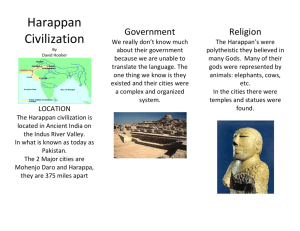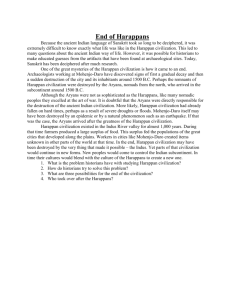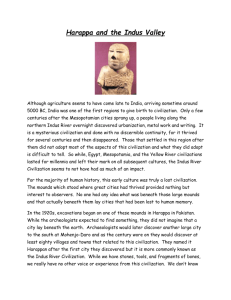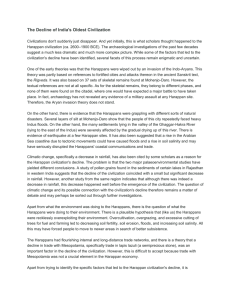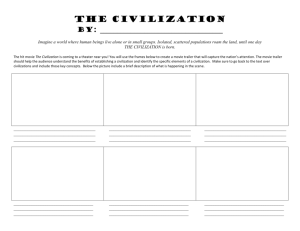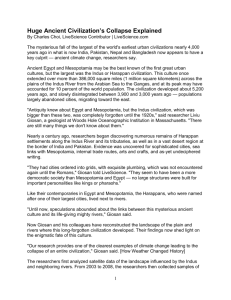The Decline of India`s Oldest Civilization
advertisement
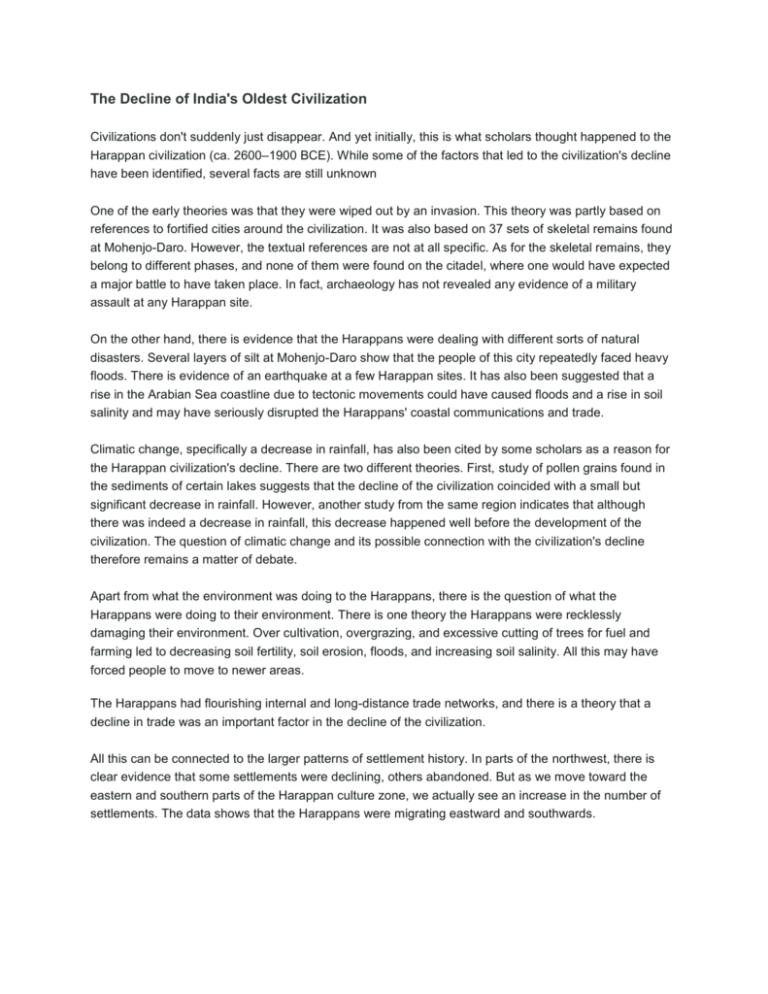
The Decline of India's Oldest Civilization Civilizations don't suddenly just disappear. And yet initially, this is what scholars thought happened to the Harappan civilization (ca. 2600–1900 BCE). While some of the factors that led to the civilization's decline have been identified, several facts are still unknown One of the early theories was that they were wiped out by an invasion. This theory was partly based on references to fortified cities around the civilization. It was also based on 37 sets of skeletal remains found at Mohenjo-Daro. However, the textual references are not at all specific. As for the skeletal remains, they belong to different phases, and none of them were found on the citadel, where one would have expected a major battle to have taken place. In fact, archaeology has not revealed any evidence of a military assault at any Harappan site. On the other hand, there is evidence that the Harappans were dealing with different sorts of natural disasters. Several layers of silt at Mohenjo-Daro show that the people of this city repeatedly faced heavy floods. There is evidence of an earthquake at a few Harappan sites. It has also been suggested that a rise in the Arabian Sea coastline due to tectonic movements could have caused floods and a rise in soil salinity and may have seriously disrupted the Harappans' coastal communications and trade. Climatic change, specifically a decrease in rainfall, has also been cited by some scholars as a reason for the Harappan civilization's decline. There are two different theories. First, study of pollen grains found in the sediments of certain lakes suggests that the decline of the civilization coincided with a small but significant decrease in rainfall. However, another study from the same region indicates that although there was indeed a decrease in rainfall, this decrease happened well before the development of the civilization. The question of climatic change and its possible connection with the civilization's decline therefore remains a matter of debate. Apart from what the environment was doing to the Harappans, there is the question of what the Harappans were doing to their environment. There is one theory the Harappans were recklessly damaging their environment. Over cultivation, overgrazing, and excessive cutting of trees for fuel and farming led to decreasing soil fertility, soil erosion, floods, and increasing soil salinity. All this may have forced people to move to newer areas. The Harappans had flourishing internal and long-distance trade networks, and there is a theory that a decline in trade was an important factor in the decline of the civilization. All this can be connected to the larger patterns of settlement history. In parts of the northwest, there is clear evidence that some settlements were declining, others abandoned. But as we move toward the eastern and southern parts of the Harappan culture zone, we actually see an increase in the number of settlements. The data shows that the Harappans were migrating eastward and southwards. The Decline of India’s Oldest Civilization Writing Assignment Directions: After reading the article, you will write a 2 paragraph essay on what you think happened to the Harappan civilization. Refer to the outline below to help you organize your thoughts. Paragraph 1: What do you think happened to the Harappan civilization? Why do you think that way? Reason #1 – What evidence/information do you have to support your answer? (3 sentences) Be specific! Paragraph 2: Reason #2 – What other evidence/information do you have to support your answer? (3 sentences) Be specific! Sum up or restate what you think happened to the Harappan civilization. Closing statement as to why you think that way.

